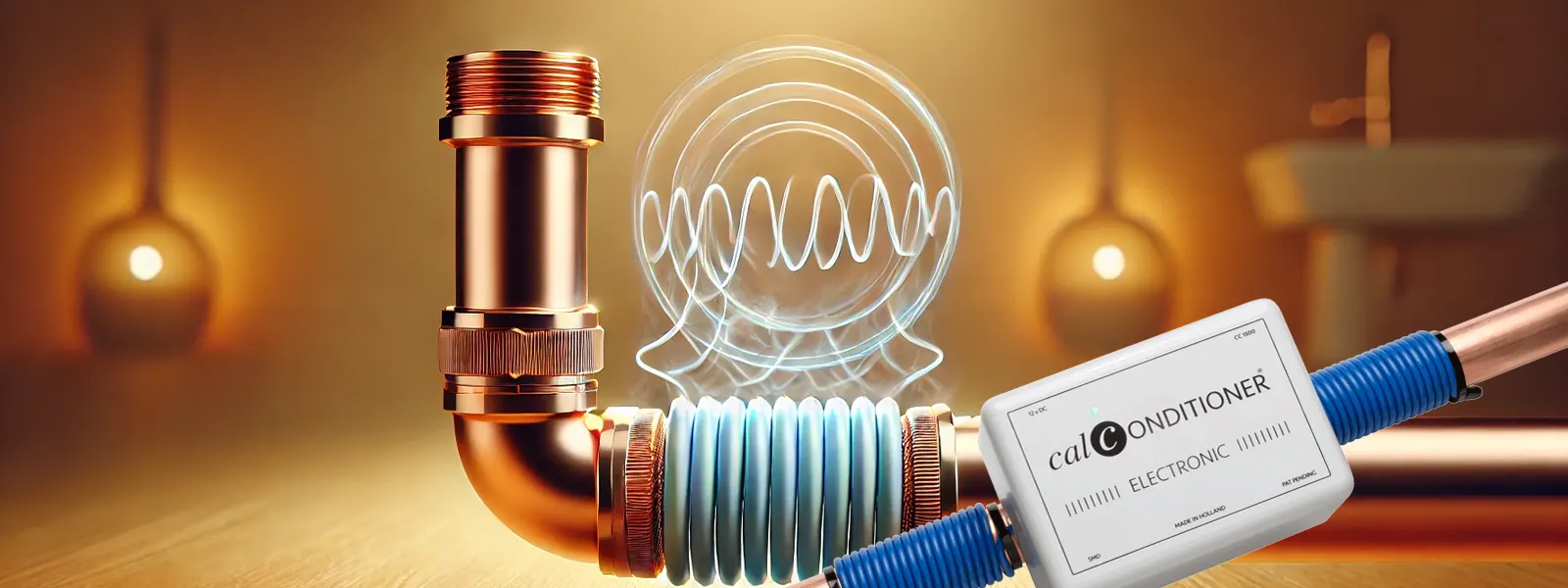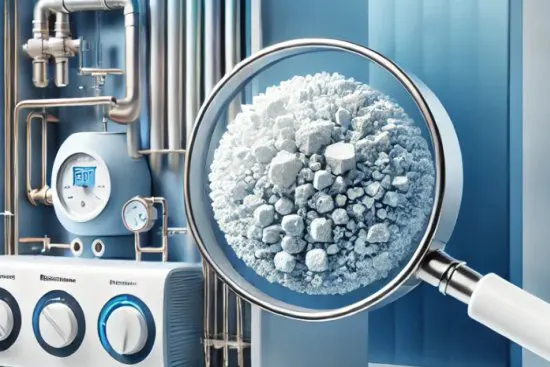
How Calconditioner water softener works
How Does an Electronic Water Softener Work?
Would you like to learn more about how the Calconditioner works? We are happy to tell you more! To understand the function of the Calconditioner, it’s important to know how lime scale or boiler scale forms. Therefore, we will first explain what causes this problem. This gives you a better idea of how the Calconditioner protects your home from lime scale deposits.
A water softener is not a water softener.
There’s a persistent misconception about “water water softeners” often advertised online. Let’s clear up this misunderstanding. It is indeed impossible to electronically remove the lime particles present in water. Expensive filtration systems are necessary for that. However, what the Calconditioner actually does is temporarily change the properties of the lime particles so that they clump together in a different way. As a result, they no longer adhere to the pipes but flow away as powder with the water. This keeps your water pipes clean and prevents annoying lime scale deposits. With the Calconditioner water softener, you enjoy all the benefits of soft water without having to invest in expensive filtration systems.
The Minerals in Tap Water
Various minerals are present in tap water, which determine how “hard” the water is. These minerals are often collectively referred to as “lime,” but in fact, they consist of different substances. In hard water, the primary component is calcium hydrogen carbonate (Ca(HCO₃)₂), which is made up of calcium ions (Ca²⁺), dissolved carbon dioxide (CO₂), hydrogen carbonate (HCO₃⁻), and carbonate ions (CO₃²⁻).

When these minerals are heated above 55 degrees Celsius, they form a hard structure, namely calcium carbonate (CaCO₃). This happens because carbon dioxide evaporates, and calcium salts crystallize and precipitate, under the influence of the so-called Van der Waals forces. With the Calconditioner, you no longer need to worry about limescale deposits in your pipes and appliances. Thanks to the electronic method of the Calconditioner, the minerals acquire different properties, preventing them from sticking to pipes and appliances. This way, you can enjoy soft water and save on expensive repairs.
If you want to know more about it, look up Van der Waals forces on Wikipedia.
Most of the formed calcium carbonate is carried away with the water, but some always remains. This remaining part leads to a layer of lime scale and boiler scale on appliances, especially on their heating elements. The insulating effect of this lime layer prevents heat transfer within a device. This means that much more energy is needed to generate heat. Lime scale deposits thus lead to a higher energy bill. The remaining layer, which prevents heat transfer, is addressed by the Calconditioner.

Calconditioner also removes existing lime scale deposits. Old lime is broken down layer by layer. The lime particles that may settle during the long periods of water stagnation disappear quickly again as soon as the water starts flowing. Therefore, Calconditioner is also a good solution for boilers or accumulators.
This principle is often applied in industry because it is cost-effective and maintenance-free.

The Calconditioner water softener neutralizes the charge difference, preventing the lime particles from attracting each other. As a result, the lime particles no longer adhere to pipes and heating elements. The particles remain suspended in the water and leave the pipes without forming lime scale deposits. Existing lime scale deposits are also slowly dissolved by this process when the “treated” water passes by. After about 70 hours, the lime particles regain their original charge, but by this time, the water has long since gone down the drain. When the water exits through the tap or showerhead, these lime particles are still in a state where they do not form lime scale deposits. Thus, you no longer have any problems with lime scale deposits on the shower wall, floor, countertop, or sink. Should any residues remain due to rapid evaporation, they can be easily removed with a cloth or brush.
Check out our solutions for residential homes or for the industry.